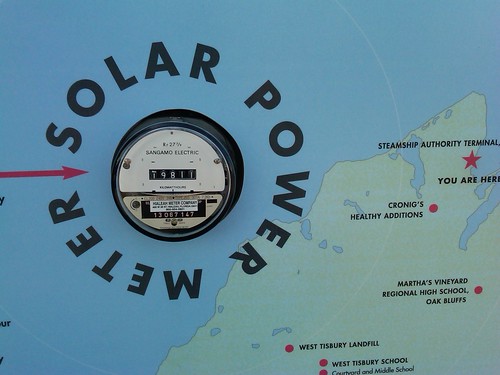New technologies enable the production of petroleum from unconventional oil resources such as "tar sands" and oil shale. While traditional oil wells have been drilled for over 2,000 years, unconventional resources offer the opportunity to develop new petroleum sources - and by extension, to shift the balance of power and economics away from traditional sources. At the same time, producing oil from oil sands may have environmental impacts that are different from traditional wells. What are tar sands or oil sands?
Oil sands, also known as bituminous sands, are loose sand or partially consolidated sandstone saturated with a dense and viscous form of petroleum technically referred to as bitumen. Oil sands are often called "tar sands" due to bitumen's sticky, dark nature. ("Tar" technically refers to a product made by distilling pitch from the wood and roots of pine trees, and was historically used to describe the sticky black residue left behind when distilling coal gas.)
Bitumen is so viscous that it cannot be pumped directly from the ground through traditional wells. Oil sand deposits are typically mined using open pits or strip mining. The mined material is mixed with water at an extraction plant, where the bitumen can be separated from the remaining minerals, sand, and water. The bitumen can then be transported for upgrading or conversion into synthetic crude oil.
Alternatively, bitumen can be extracted by heating the raw sands in place. In-situ production methods include injecting steam or solvents, or piping in oxygen and igniting some of the bitumen. These methods rely on the use of large amounts of water and energy.
According to
the U.S. government's 2012 oil shale and tar sands programmatic environmental impact statement, about two tons of tar sands can produce one barrel of oil. Extraction and processing typically require several barrels
of water for each barrel of oil produced. Some of this water can
be recycled.
About three-quarters of the bitumen can be extracted from the raw material. Spent sand and other materials are typically returned to the mine after processing.
Producing oil from bitumen derived from tar sands can have significant environmental impacts. The mining and upgrading processes are energy-intensive and result in emissions of greenhouse gases and air pollutants. Mine sites are typically significantly disturbed, and impacts to water may be both local and throughout the downriver watershed. The
association between the proposed Keystone XL pipeline and oil sand resources in Alberta, Canada led to environmental opposition to that pipeline.
Producing oil from oil sands may be controversial, but Canada possesses the world's largest known resources and is developing them rapidly. Canada points to environmental regulations and controls, as well as economic development benefits. Developing oil sand resources creates jobs and economic growth, and mine sites are typically in rural areas eager for opportunity. If the U.S. does not approve the Keystone XL pipeline, Canadian producers may push for an alternative route to refineries or export terminals in British Columbia, obviating the need for U.S. approval.
Economically, synthetic crude oil produced from oil sands bitumen can be cost-effective if the price of oil produced from traditional wells is high. On the other hand, if oil from wells or other unconventional resources like oil shales can be produced cheaply, oil sands may not be economically competitive. The significant capital investment required to produce bitumen from oil sands means that producers must often make long-term investments that risk losing money in some years. Producers may also face the risk of tighter environmental standards, the cost of compliance, and any penalties for noncompliance.





